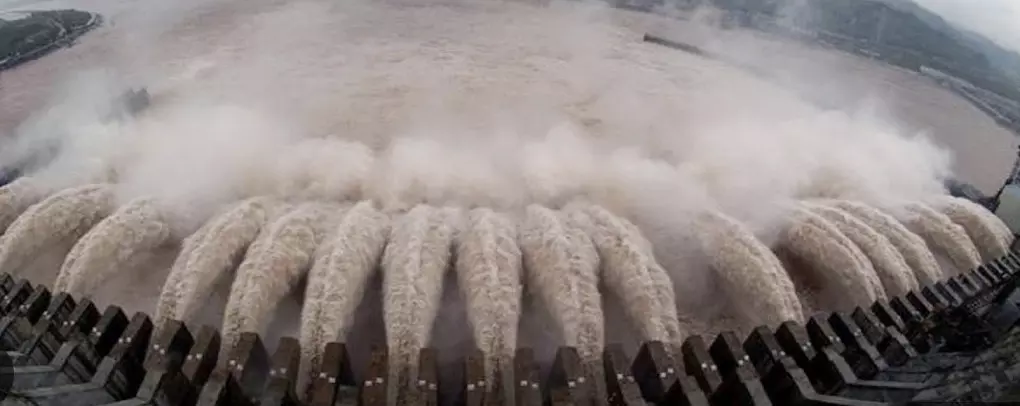Is China hatching a sinister water war against India with the world's largest dam on the Brahmaputra?
Is China hatching a sinister water war against India with the world's largest dam on the Brahmaputra?

China has announced plans to build the world's largest dam on the Brahmaputra River in Tibet, close to India’s border. This dam is set to generate over 300 billion kWh of electricity annually—more than three times the capacity of the existing Three Gorges Dam. However, India has expressed serious concerns about the project’s environmental, geological, and geopolitical implications.
The dam will be constructed in a fragile Himalayan region prone to earthquakes. Environmentalists warn it could disrupt the river's flow, causing severe droughts and floods downstream. Millions of Indians, particularly those in Assam and Arunachal Pradesh, may face the brunt of these impacts.
India's Ministry of External Affairs has reiterated the country’s rights over the Brahmaputra’s waters and urged China to ensure transparency in its plans. Officials stressed that India, as a lower riparian state, has established user rights and will take necessary steps to protect its interests.
The project is not just about hydropower. Experts believe it could heighten geopolitical tensions, potentially leading to a "water war" between India and China. Beijing’s increased dam-building activities on rivers shared with India and Bangladesh have long been a point of contention.
While China claims the dam won’t affect downstream nations, India remains wary. To counter the move, India is considering its own dam projects to mitigate potential risks. However, building large infrastructure in India often faces delays due to technical and local challenges.
This development underscores the urgent need for cooperation and trust between the two countries to avoid further escalation over shared resources like the Brahmaputra.
Tensions Rise Over Brahmaputra Dam Activities
Bangladesh, the lowest riparian state of the Brahmaputra River, faces significant challenges from upstream dam activities by China and India. Concerns have been reignited following reports of China’s potential dam construction, with Bangladeshi environmentalists warning about the downstream impacts on water flow. In a 2018 publication on Brahmaputra river politics, Bangladeshi scientists highlighted the need to address sedimentation issues arising from upstream activities.
Meanwhile, China has stepped in with a proposal. PowerChina, a leading engineering firm, signed a 2016 memorandum with the Bangladesh Water Development Board to embank the Teesta. This initiative aligns with broader Chinese investments in Bangladesh, totaling around $25 billion under the Belt and Road Initiative, underscoring the strategic depth of their bilateral ties.
India’s Balancing Act
India, the middle riparian state, faces dual concerns: upstream Chinese activities in Tibet and downstream Sino-Bangladeshi collaboration. Dhaka’s decade-long wait for the Teesta agreement has fostered frustration, nudging it closer to Beijing. If China’s involvement with Bangladesh prompts India to prioritize water-sharing agreements, the situation might yield a silver lining.
The Bigger Picture: Challenges and Solutions
The Brahmaputra basin epitomizes resource-driven tensions exacerbated by geopolitical rivalries and a lack of trust. Unlike other transboundary rivers, the Brahmaputra suffers from poor institutional frameworks, with no multilateral water-sharing agreement among China, India, and Bangladesh. Bilateral engagements are limited to periodic expert meetings and data-sharing accords, which have been unreliable—China notably withheld hydrological data from India during the 2017 Doklam standoff.
China’s unilateral hydropower initiatives, particularly in sensitive areas, deepen mistrust. Bangladesh fears becoming collateral in power plays between its two larger neighbors. Sino-Bangladeshi collaboration further diminishes the prospects for unified pressure on China to moderate its plans.
Towards Sustainable Cooperation
Defusing tensions requires leadership choices that prioritize dialogue over antagonism. A starting point would be renewed trilateral discussions involving scientists and policymakers. Such exchanges could address India’s concerns about Chinese diversion plans and the risks of poorly constructed dams, which could have catastrophic consequences, as seen during the 2000 Tibetan landslide. Greater transparency from China, including allowing Indian access to dam construction sites and plans, could foster trust.
Long-term solutions could include establishing a Brahmaputra Basin Commission. This body would not depend on resolving territorial disputes but could focus on shared goals such as flood control, data sharing, and dam safety standards. Inspired by the Lancang-Mekong Cooperation Mechanism, such a framework could stabilize regional relations and allow China to showcase leadership in regional governance.
As the Brahmaputra flows through its riparian states, the need for collaboration and trust has never been more urgent. Only by working together can these nations ensure sustainable management of this vital resource.

